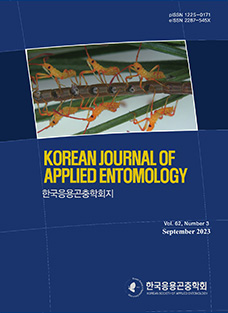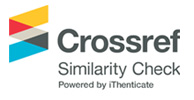The genus AcyrthosiphonMordvilko, 1914 is classified within the subfamily Aphidinae, which comprises 94 species distributed worldwide (Favret, 2024). The majority of species in this genus is distributed across the Palaearctic region (Heie, 1994). The genus is comprised of three subgenera, the nominotypical Acyrthosiphon (91 species), LiporrhinusBörner, 1939 (1 species) and XanthomyzusNarzikulov, 1969 (2 species) (Favret, 2024;Eastop and Hille Ris Lambers, 1976). The species in this genus are known to feed on a variety of dicotyledonous plants, particularly Fabaceae, Rosaceae, and Euphorbiaceae, without exhibiting host alternation (Blackman and Eastop, 2024).
Presently, five species have been reported on South Korea (Paik, 1972;Lee et al., 2002); Acyrthosiphon (Acyrthosiphon) pisum (Harris, 1776) was recorded by Okamoto and Takahashi (1927), A. (Liporrhinus) chelidonii (Kaltenbach, 1843) was recorded by Shinji (1941), A. (Acyrthosiphon) malvae (Mosley, 1841) was recorded by Paik (1965), A. (Acyrthosiphon) gossypiiMordvilko, 1914 and A. (Acyrthosiphon) kondoiShinji, 1938 were recorded by Paik (1972). In 2019, Acyrthosiphon (Acyrthosiphon) lactucae (Passerini, 1860) was identified as a new collection on Lactuca sativa L. (Asteraceae) in South Korea. Consequently, a total of six species are distributed in South Korea. In this study, we report the apterous viviparous female of Acyrthosiphon (Acyrthosiphon) lactucae for the first time in South Korea and provide species descriptions, measurements, host plants, and distributions.
Materials and Methods
In 2019, colonies of A. (Acyrthosiphon) lactucae were collected on Lactuca sativa in 2019. The aphid samples were preserved in 95% alcohol and slide glass specimens were mounted on Canada balsam, following the method of Blackman and Eastop (2000) methods. The images and measurements were obtained using a LEICA (DM3000 LED) and a LEICA (CTR6 LED). All specimens were deposited at the Institute of Agriculture & Life Science, Gyeongsang National University. The following abbreviations are used in the description of morphological features: BL, body length from the head to the end of the cauda; Ant., antennae; Ant.I - VI and Ant.VIb, antennal segments I - VI, and basal part of antennal segment VI, respectively; PT, processus terminalis; BDAnt.III, basal diameter of antennal segment III; 2HT, second segment of hind tarsus; HFM, hind femur; HTB, hind tibia; SIPH, siphunculus; and URS, ultimate rostral segment.
Taxonomic Accounts
Genus AcyrthosiphonMordvilko, 1914: 62, 75
Subgenus AcyrthosiphonMordvilko, 1914: 76, 82
TljaMordvilko, 1914: 73
MacchiatiellaDel Guercio, 1917: 210
MirotarsusBörner, 1939: 83
LactucobiumHille Ris Lambers, 1947: 214, 220
HottesinaBörner, 1950: 12
Type species: Acyrthosiphon pisum pisum (Harris, 1776) (= Aphis pisiKaltenbach, 1843)
Acyrthosiphon (Acyrthosiphon) lactucae (Passerini, 1860) (Table 1; Figs.1, 2)
Siphonophora lactucaePasserini, 1860: 34
Macrosiphum lactucariumBörner, 1931: 11
Macrosiphum barriEssig, 1949: 151
Description. Apterous viviparous female.
Color in life. Pale yellowish green or pale red, the surface has a pale greyish wax; legs, siphunculi and cauda pale, except tarsi dark brown, each of the distal antennae segment dark brown.
Morphology. A pale brown oval body, 1.61 - 2.23 mm long (Fig 2A). Head is smooth, with 3 pairs of acuate setae on dorsum. Antennal tubercles developed with 2 setae on each side, frons is a wide U-shaped with 3 setae on apex. Antennae 6-segmented, the end of III-VIb segment is brown, 1.78 - 2.25 mm long (Fig 2G); Its whole length 0.89 - 1.19 times as long as BL. Ant.III at the apex slightly imbricated with 8 - 14 setae; Ant.IV-V imbricated with 5 - 8, 4 - 6 setae; Ant.VI intensely imbricated with 2 - 4 setae on Ant.VIb; PT 0.43 - 0.57 mm long, with 3 apical setae, 2.81 - 4.07 times as long as Ant.VIb. Rostrum reaching to the edge of hind coxae; Ultimate rostral segment 0.12 - 0.13mm long, with 18-27 accessory setae (Fig 2D); URS 0.63 - 0.75 times as long as 2HT, 0.75-0.93 times as long as Ant.VIb. Hind coxa spinulose with 6 - 8 acuate setae; hind trochanter with 3 or 4 setae; 2/3 of hind femur on basal is smooth and 1/3 of hind femur on vertex is bumpy, bearing short setae; hind tibia smooth with acuate setae, 4/5 of hind tibia on basal is pale brown and 1/5 of hind tibia on vertex is brown (Fig 2B); first segment of hind tarsus with 3 setae at apex; 2HT imbricated with 19 - 23 setae (Fig 2F). Abdomen smooth and dorsal setae short fine-shaped. Siphunculus cylindrical shaped without subapical reticulation and flanged on apex (Fig 2C); 0.21 - 0.29 times as long as body length, 4.78 - 6.56 times as long as width of SIPH, 0.83 - 1.0 times as long as Ant.III. Cauda long-tongued shaped, slightly constricted, spinules strong and dense with 7 - 8 setae (Fig 2E); 0.57 - 0.77 times as long as SIPH, 2.14 - 3.00 times as long as Width of Cauda.
Specimen examined. 9 apterous viviparous females, Mannyeon-dong, Daejeon-si, South Korea, 26.x.2019, on Lactuca sativa, D.-K. Park, GNU.
Host plants.Lactuca sativa, Lactuca spp. (L. perennis, L. saligna, L. serriola, and L. viminea chondrilliflora) (Blackman and Eastop, 2024)
Distribution. Korea (new record), Europe, Middle East, North and Central Asia, North America and South America. (Blackman and Eastop, 2024;Heie, 1994)
Key to species of the genus Acyrthosiphon in South Korea
-
1. SIPH more than 1 mm long and 2.6 - 5.0 times as long as cauda. On Leguminosae and Malvaceae. ······················ ························ Acyrthosiphon (Acyrthosiphon) gossypii
-
- SIPH usually less than 1 mm long but if more than only 1.2
-
- 1.9 times as long as cauda. ·········································· 2
-
2. Body less than 2.60 mm. ·············································· 3
-
- Body more than 2.60 mm. ············································· 4
-
3. Body 1.53 - 2.47 mm; URS bearing 8 - 10 accessory hairs. cauda which bears 9-14 hairs. On Chelidonium. ············· ························· Acyrthosiphon (Liporrhinus) chelidonii
-
- Body 1.61 - 2.23 mm; URS bearing 16 - 25 accessory hairs. cauda which bears 7-10 hairs. On Lactuca. ··········· ························ Acyrthosiphon (Acyrthosiphon) lactucae
-
4. Body 3.71 - 4.85 mm; Antenna 4.42 - 6.41 mm; URS 0.30 - 0.53 times as long as Ant.VIb. ····································· ··························· Acyrthosiphon (Acyrthosiphon) pisum
-
- Body less than 3.40 mm; Antenna less than 4.00 mm; URS more than 0.60 times as long as Ant.VIb. ······················ 5
-
5. PT 4 - 6 times as long as Ant.VIb; URS only 0.66 - 0.85 as long as 2HT. ······ Acyrthosiphon (Acyrthosiphon) kondoi
-
- Ant.PT usually shorter but if 4.5 - 6 times as long as Ant.VIb. URS is usually as long as or longer than 2HT. On Rosacease and Geraniaceae. ··········································· ·························· Acyrthosiphon (Acyrthosiphon) malvae









 KSAE
KSAE





